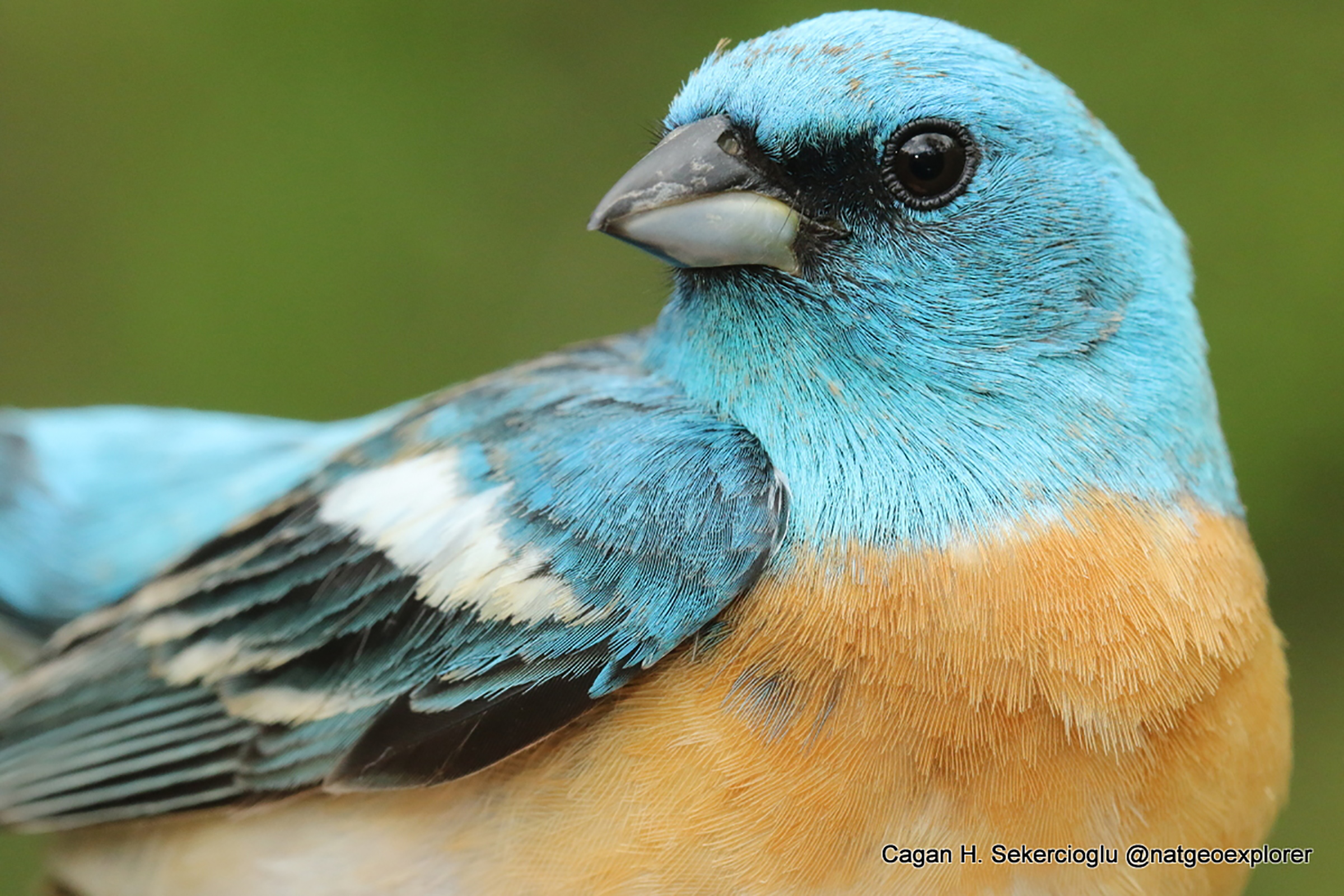
May 28, 2015—Utah is well-known for its breathtaking mountain landscape, world-class skiing and easy access to the great outdoors. University of Utah’s Biodiversity and Conservation Ecology lab, led by assistant professor Çağan Şekercioğlu (pronounced Cha-awn Shay-care-gee-oh-loo), has created an avenue by which U students, and other community members alike can take further advantage of the state’s famed outdoors and face wildlife head-on through bird banding in Red Butte Canyon. The project is a good example of “citizen science” where regular people volunteer to help collect data and contribute to science through working with professional scientists.
Now in its fourth year, the lab’s bird banding site in Red Butte Canyon, a protected Research Natural Area directly behind the U, relies on citizen scientist members of the Salt Lake City community in its efforts to collect data about the types and numbers of birds that pass through the canyon. The data are used to determine bird community ecology, composition of species, sexes and ages, examine population trends and monitor breeding bird populations throughout the years.
The banding season lasts roughly from mid-April through October each year, with volunteers heading out to the station three times each week from sunrise until noon. On a good day, up to 15-20 birds can be caught.
Currently, the lab hosts six to seven regular undergraduate volunteers and two regular high school volunteers. Members of the Tracy Aviary in Liberty Park, the Great Salt Lake Audubon and two to three U classes also visit the bird banding site regularly.
The volunteer-based nature of the lab’s bird banding research provides university students and community members alike the opportunity to directly learn about avian ecology. Volunteer citizen scientists learn the proper techniques for extracting captured birds from nets, learn how to identify different bird characteristics such as age and sex and learn about the science behind their efforts along the way.
Kylynn Parker, a U student who has volunteered for the lab for three years, said she originally started volunteering because she wanted to make a tangible difference in the field of conservation.
“I wanted to go out in the field and contribute to the overall understanding of the role birds play in ecosystems in Utah and how habitat fragmentation, climate change and human activities affect avian behavior and survival” she said.
The benefits of volunteering with the lab go beyond gaining a new hobby and learning the nuanced differences between bird songs, and also provide volunteer members like Parker with invaluable transferable skills for school and the workforce.
“Volunteering has been more useful to my education far more than materials learned in the ecology classes I have taken at the U. Volunteering requires that you apply concepts you have learned in class directly to the work you are doing in a lab or other career-seeking job,” said Parker.
Parker’s passion for ornithology and love for the lab are palpable; her car’s interior is adorned with bird feathers and with binoculars hanging around her neck, she is always ready and on the lookout for birds to observe. Parker has clearly gained a great deal of knowledge from her time as a volunteer, as her expert identification and handling of birds come second only to the lab’s graduate students and principal investigator Şekercioğlu.
Parker’s enthusiasm for birds and commitment to the lab are not unique. Each lab volunteer was equally knowledgeable about avian ecology, dedicated to the lab’s research goals and eager to teach others.
According to Parker, the lab’s open invitation to the community to come see and interact with birds firsthand makes them eager to contribute to the lab’s conservation efforts. Furthermore, outreach efforts help raise awareness of Utah’s avian diversity and why it’s important to maintain that diversity in years to come.
“Some of my best experiences banding with the lab involve getting people excited enough to wake up at 5 a.m. to help us band and ultimately tell others about their experience and what they have personally gained from it,” she said.
“Being actively involved in a scientific research project is critical for getting a good university education,” Şekercioğlu said. “Especially in STEM fields, participating in scientific projects significantly improves undergraduate education. Having a federally protected Research Natural Area in our backyard is an incredible opportunity for the U and we hope that our lab’s bird banding and mammal camera trap research projects make Red Butte and our scientific research there more accessible to the public while improving undergraduate education and training citizen scientists in Salt Lake City. People love birds and bird banding is also an excellent way to provide public outreach and environmental education.”
If you’d like to learn more about volunteering with the U’s Biodiversity and Conservation Ecology lab, contact Jordan Herman jordan.m.her@gmail.com or Joshua Horns jjhorns@gmail.com.
To see more photos of birds caught in Red Butte Canyon, follow Çağan Şekercioğlu’s Instagram.
